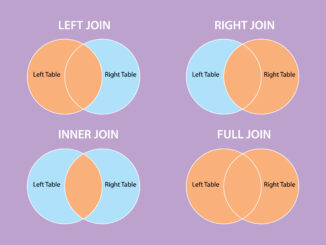Introduction
The migration from traditional Online Analytical Processing (OLAP) systems to real-time analytics on ClickHouse is driven by the growing need for faster and more cost-effective data processing in the modern banking industry. As customer expectations and competition increase, banks must leverage advanced analytics to gain insights, optimize operations, and enhance customer satisfaction. There are several reasons why traditional OLAP is expensive and less efficient compared to real-time analytics on ClickHouse:
- Scalability: Traditional OLAP systems have limited scalability, making it challenging to accommodate growing data volumes. ClickHouse, an open-source columnar database, is designed for real-time analytics and offers high scalability, allowing banks to handle millions of queries per second while maintaining low latency.
- Cost-effectiveness: Traditional OLAP systems often come with high licensing and maintenance costs. In contrast, ClickHouse is open-source, which means banks can implement it without incurring licensing fees. Additionally, ClickHouse’s efficient data compression and storage mechanisms reduce infrastructure costs, making it a more cost-effective solution.
- Real-time analytics: Modern banking demands real-time data processing for fraud detection, personalized recommendations, and customer experience enhancement. Traditional OLAP systems usually operate in batch mode and struggle to provide real-time insights. ClickHouse excels in real-time analytics, providing up-to-date information for decision-making.
- Flexibility: Traditional OLAP systems typically have rigid data schemas that make it challenging to adapt to changing business requirements. ClickHouse provides a flexible schema, allowing banks to modify their data structures easily and adapt to evolving needs.
- Performance: ClickHouse is designed for high-performance analytics, using techniques like vectorized query execution, parallel processing, and data compression to deliver fast query results. Traditional OLAP systems often struggle to match this level of performance, especially when dealing with large data sets and complex queries.
- Ease of integration: ClickHouse can be easily integrated with existing systems, tools, and platforms. This makes it easier for banks to adopt real-time analytics without disrupting their existing infrastructure.
ClickHouse comparison with Teradata
| Feature | ClickHouse | Teradata |
|---|---|---|
| Architecture | Columnar database | Relational database |
| Data compression | Built-in data compression for efficient storage | Limited data compression options |
| Query performance | Extremely fast, designed for high-speed analytics | Fast, but may struggle with very large datasets |
| Query language | SQL-like language called ClickHouse SQL | SQL |
| Data ingestion | Can handle high-volume, real-time data ingestion | Can handle high-volume data ingestion |
| Cost | Open-source and free, with commercial support available | Proprietary software with licensing fees and additional costs |
| Scalability | Designed to scale horizontally across commodity hardware | Designed to scale vertically across specialized hardware |
| Ease of use | User-friendly interface and easy to set up | Requires specialized knowledge and training to set up and use effectively |
| Use cases | Best for real-time analytics and data warehousing | Best for large-scale data warehousing and business intelligence |
ClickHouse comparison with Hadoop
| Feature | ClickHouse | Hadoop |
|---|---|---|
| Data storage | Columnar storage for efficient compression and query performance | Hadoop Distributed File System (HDFS) |
| Query performance | Extremely fast, designed for high-speed analytics | Slower than ClickHouse, especially with complex queries |
| Query language | SQL-like language called ClickHouse SQL | Hadoop Query Language (HQL) |
| Data processing | Designed for OLAP (online analytical processing) workloads | Designed for both OLAP and OLTP (online transaction processing) workloads |
| Data ingestion | Limited real-time data ingestion capabilities | Designed for batch processing and can handle both real-time and historical data |
| Cost | Open-source and free, with commercial support available | Open-source and free, but may require additional hardware and infrastructure costs |
| Scalability | Designed to scale horizontally across commodity hardware | Designed to scale horizontally across commodity hardware |
| Ease of use | User-friendly interface and easy to set up | Requires specialized knowledge and training to set up and use effectively |
| Use cases | Best for real-time analytics and data warehousing | Best for batch processing, ETL (extract, transform, load), and data warehousing |

Why do successful companies work with ChistDATA for ClickHouse Consultative Support and Managed Services?
- ChistaDATA provides full-stack ClickHouse Optimization. We deliver elite-class Consultative Support (24*7) and Managed Services for both on-premises ClickHouse infrastructure and Serverless/Cloud/ClickHouse DBaaS operations.
- ChistaDATA Server for ClickHouse (and all tools essential for Data Ops. @ Scale) will be Open Source (100% GPL forever) and free. We are committed to helping corporations in building Open Source ColumnStore for high-performance Data Analytics.
- Global Team available 24*7 for ClickHouse Consultative Support and Managed Services.
- Our team has built and managed Data Ops. Infrastructure of some of the largest internet properties. We know very well the best practices for building optimal, scalable, highly reliable and secured Database Infrastructure @ scale.
- Lean Team Culture: Startup-friendly and specialists in DevOps. and Automation for Database Systems Maintenance Operations.
- Transparent pricing and no hidden charges – We have both fixed-priced and flexible subscription plans.
- Based out of San Francisco Bay Area. But, we have global teams operating from 11 cities worldwide to deliver 24*7 Consultative Support and Managed Services for ClickHouse.
Conclusion
In conclusion, migrating from traditional OLAP to real-time analytics on ClickHouse offers numerous benefits for modern banking, including increased scalability, cost-effectiveness, real-time insights, flexibility, performance, and ease of integration. By leveraging these advantages, banks can enhance customer satisfaction, improve operational efficiency, and drive success in an increasingly competitive market.
To know more about Hadoop and ClickHouse, do consider reading the below articles


